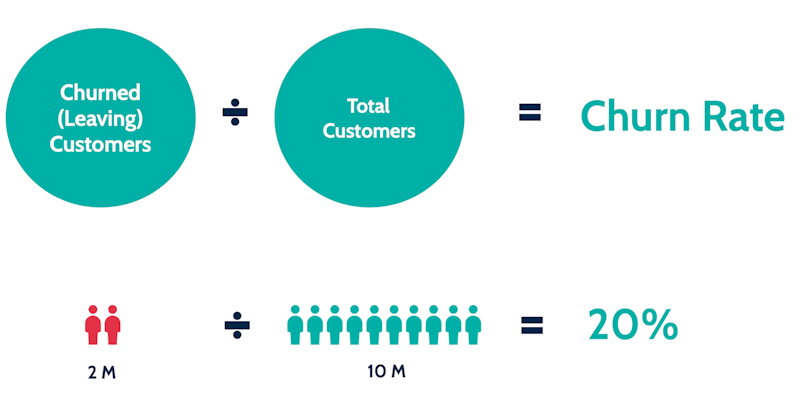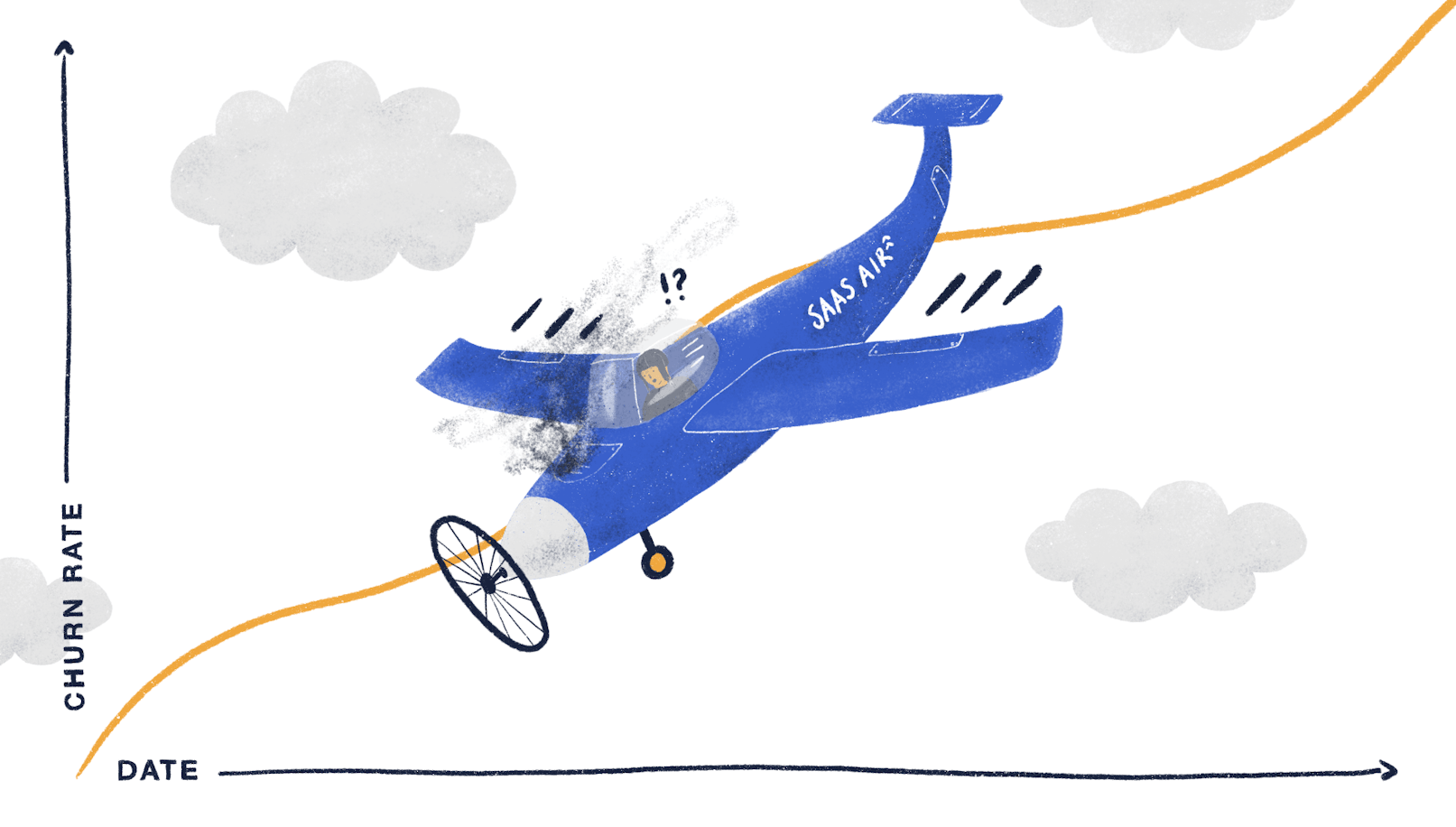Startups are a very romanticized medium—the hustle spirit, investment funds, huge offices with inspirational murals. While it may be cool to be part of the scene, it’s worth mentioning that most of it is a facade. Most startups, especially SaaS products, fail more often than not—about 90% of the time, to be precise.
It’s evident that startups rely on aggressive growth to exist, and sustaining it is very challenging. A business’s steady expansion is typically hindered by an array of common problems. Fortunately, many of them can be addressed by applying UX to understand your users, the market, the degree of your scalability, and much more.
In this article, we’ll take a quick look at the most common problems that cause SaaS startups to fail and some surefire solutions to help you predict or solve your venture's most pressing issues.
Let’s dive right in.
Kinds of problems
While the problems that can hinder a startup’s growth can be both external and internal, we’ll have to focus on the latter today. After all, there’s very little we can do about the economy, politics, or public health, for that matter, the COVID pandemic being a prime example of that.
Let’s take a closer look at the things that are within our control.
1. The problem you’re solving doesn’t exist
This is most probably the most detrimental problem of them all. No matter how many resources will be thrown at developing a product and hiring a stellar team, solving an inexistent problem will inevitably lead to a lack of adoption and imminent failure.
While this sounds like a truism, it appears to be among the most common reasons SaaS companies fail.
At the root of a successful business, there should be a thoroughly validated product idea. Fortunately, to prevent your business from falling into this trap, there is a wide array of standard procedures, some of which are specific to the UX design process.
User interviews: understanding the most common issues your target demographic is confronted with is a surefire way of calibrating product parameters and the goals it aims to achieve;
Prototyping and usability testing: having an iterative approach by continuously testing your design decisions with your end-users will allow you to better adjust your prototypes to their actual needs;
Market research: an in-depth understanding of the market you’re trying to enter will allow you to develop a unique and valuable product;
Kickstarters: they’re a great way to test the waters by understanding whether there’s actual interest in your product before it’s fully developed;
To better define the problem, startups should also invest in user testing of existing solutions on the market. This will provide them with a wealth of insight on the strong and weak points of their competitions’ products.

2. Fierce competition
According to a report published by CB Insights, “being outcompeted” is the fourth most common reason for a startup’s demise. In another study that analyzed 80 interviews with failed startup owners, competition was mentioned as a problem by 10% of startup founders.
Getting outcompeted typically suggests that your product or service is not good enough or that your marketing and sales aren’t on point. Your SaaS product metrics should give you an indication of which of the two problems you’re dealing with.
If it’s the product, then the activities we outlined above should give you insight into what’s missing.
If it’s sales and marketing, then you should review your actions and consider getting help from either new teammates or dedicated agencies.

3. Weak team
Assembling a core or management team that does not satisfy product needs is another common reason SaaS startups fail.
SaaS products rely on a solid founder to determine the right course of action and ensure a proper understanding of the market, which are both imperative for healthy growth.
It’s also the higher-ups’ responsibility to put together a strong team. Assembling a collective that with a diverse skill set is a vital factor for a product’s success. Furthermore, it’s essential to provide team members with trust and allow them to focus on what they do best. Failure to do so probably suggests that you’re not entirely confident in them.
However, simply blaming founders for a startup’s lack of success can be quite reductive. Often, a strong management team and an invested (pun intended) VC team can compensate for a founder’s shortcomings. As a result, they can grow into their position better in time.
Companies can fail due to an unskilled core team, too. Weak sales teams will slow down acquisitions, an unprepared marketing team will burn through budgets with very little return, and a sub-par design team will develop a product that doesn’t serve user needs.
More importantly, excellent teams aren’t just about putting together a group of talented people—it’s also about the synergy between them. A carefully assembled collective will help complement some members’ strengths and cancel out other members’ weaknesses.
4. Blowing the budget
Founders often burn a hole in a SaaS product’s budget by attempting to scale it prematurely, marketing it too early in the process, or hiring too many people right off the bat. Most of these budgeting mistakes are fundamentally noble and are driven by a founder’s attempt to make their project more visible and perform better. However, often such decisions are ill-timed.
To have a better approach to timing your budget-related choices, it’s essential to forecast them. Creating a relatively rigid budget plan allows you to carefully think through product milestones and make less emotional choices once they’re due. It’s even better to have a metric-focused approach when setting these milestones.
When it comes to marketing expenses, it’s best to start investing in advertising your product when it’s about 90% complete. In the early stages of development, a product’s positioning, features, and overall functionality can shift significantly; therefore, it often doesn’t make sense to start marketing it until it’s a relatively crystallized service. This can also be problematic for early adopters since they can feel frustrated to see a product they’re passionate about change course during development, which pretty much invalidates your prior efforts.
5. The business model is not scalable
Given that SaaS models revolve around subscriptions, it’s vital to estimate the market size and compare the data against your monetization. Then, you’d have to think through whether having more users will result in higher profit in proportion to your expenses. If, for example, your product is relatively cheap, and for every ten users, you have to hire another support representative, the product isn’t very scalable.
A business model that is valid only up to a particular size won’t allow your startup to sustain growth. It’s often the case that businesses need to change their approach earlier than they had anticipated.
A few essential questions that startup founders should ask themselves when devising a scalable business model are:
Are people generally willing to pay for the solution we’re offering? — an excellent way of testing it can be running a Kickstarter campaign;
How many people are currently paying for similar solutions? — Can be answered by running a thorough competitive analysis;
What resources do we need to invest to keep the product running?
How will this change if our user count increases tenfold?
6. Higher Churn Than Growth
High churn rates have historically sunken startups. SaaS businesses need to maintain constantly low churn rates while keeping their customer acquisition rates high. Failing to do so is a solid indicator that the business is at the brink of failure.
The acceptable annual churn rate among SaaS businesses is considered to be 5-7% (about .50% per month). These numbers roughly coincide with the findings of a 2015 study published by Pacific Crest that indicate that approximately 70% of surveyed large SaaS companies had an annual churn in the <10% range. If your numbers exceed these averages, this is an excellent time to reevaluate your retention strategy and assess whether you’re doing everything right.
Customers may opt out because they don’t see the value of the service provided, or because of insufficient value. Given that your product directly addresses a market need, there is a variety of things that can be done to communicate its value to your customers:
Proper onboarding and messaging;
High-quality and accessible support (documentation, FAQ’s and live chat, etc.);
Great usability (run at least 5 usability tests for each cluster of features);
Proper feature prioritization and MVP definition;
Having enough delightful features that make the product not only productive but also enjoyable to use (gamification, illustrations, smooth interactions, etc.);

The common theme
While most of the problems we’ve looked into are fairly diverse, there’s a beautiful coincidence among all of them—the solution to all of them is a proper design process.
Diligently following the design process is a surefire path towards a foolproof product. Nothing’s ever guaranteed, of course, but you want to have the odds in your favor.





